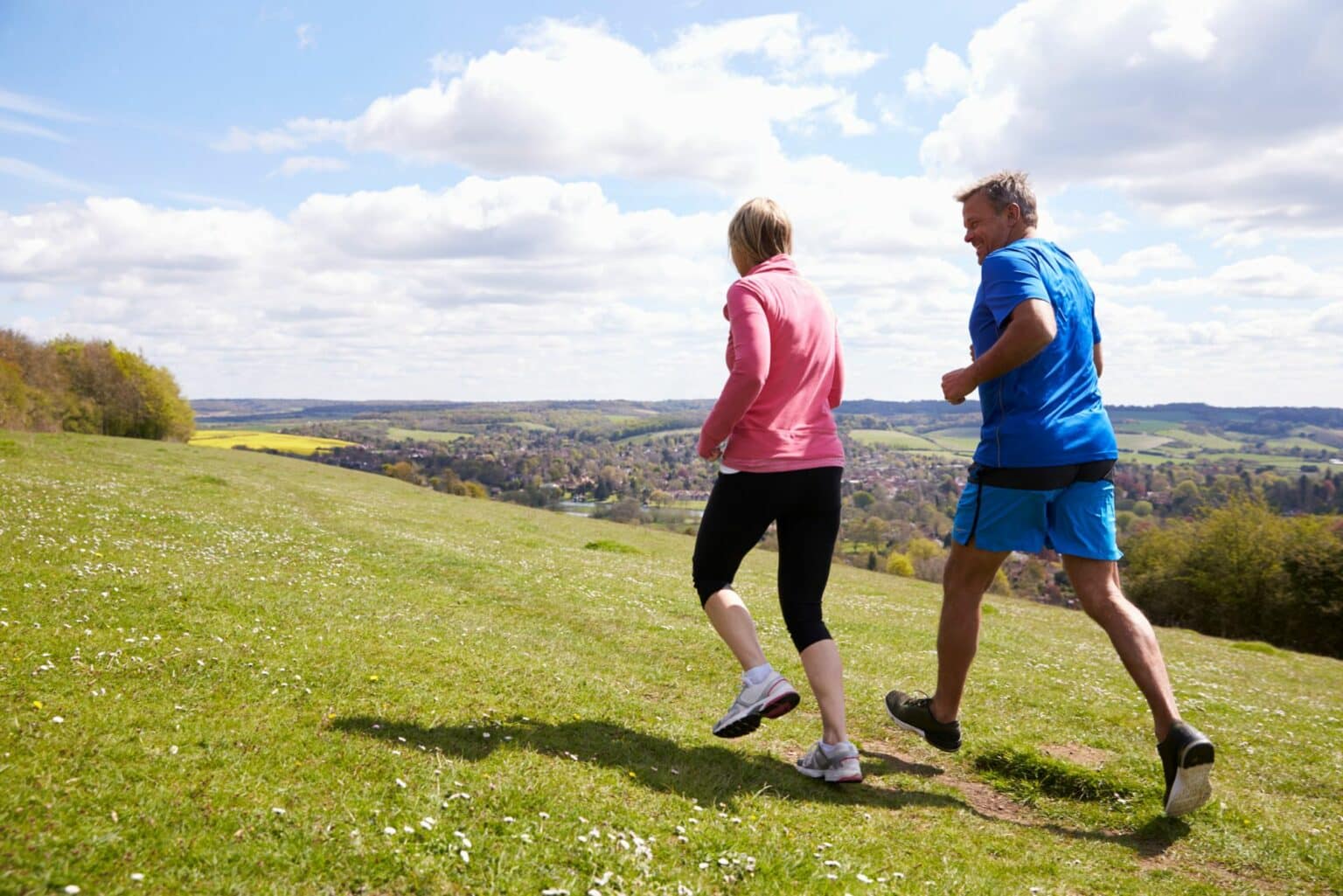


“When aiming for marathon pace on a hilly course in Surrey, should I focus on the ‘effort pace’ shown on my watch instead of the actual pace? For instance, during a long training run, maintaining a 6:45 pace uphill can be challenging. By pushing harder, the actual pace might slow to 8:00, but the effort pace registers at 6:40.”
Ray
Running coach answer: Using running watch effort pace on hills
This is a problem for those who live in very hilly areas – I coach a runner who lives on a farm in a remote valley between the Cumbrian Lakes and the Pennines. He doesn’t have much flat terrain anywhere, yet he has set PBs in most distances this autumn. He has built tremendous leg strength from running the hills.
For those who live in Cambridgeshire, you probably have the opposite problem. I have a mantra that “running hills can be an endurance runner’s best friend”.
It is true that the computer on your wrist, these days, can give you a lot of information, but being able to analyse it whilst on the run can be difficult; working out effort beyond an indication of the pace you are currently doing, I would find difficult. Once downloaded, you can see all sorts of information about the run you just did – although, again, that might be useful, I am not digitally minded enough to collect the information in real time.
I ran with an early model, basic, digital watch in the early 1980s that only gave you time. Before that, I used to look at the kitchen clock on the way out for a 1hr run, then at it again when I got back, just to check I had been out long enough. On the track, I had a handheld timekeeper’s stopwatch with a sweep hand for seconds that used to jump around if held whilst running!
The point of the last paragraph is that we shouldn’t be a slave to what our watch is telling us and, for most runs, work on the idea of perceived effort. I would personally build my training plan around long, hilly runs at a steady pace for most of the early part of my 20-week marathon build-up. These days, we would call that running in zone 2.
You don’t, and can’t, stay in zone 2 all the time – the hills will determine some of the effort. If you run on perceived effort, for the total of a run long run, your perception of the effort of the run should be about a 7:10, or that most of it was steady, that you could breathe normally, and talk to running partners during it.
In other words, for most long runs, don’t overthink it.

As your programme develops, you will need to look at pushing the long runs closer to your target marathon pace, maybe aiming to put faster blocks into the run. Then, closer control of pace and effort becomes more important. Then, planning a flatter route becomes important.
I prefer to have my runners do progressive-pace long runs, starting steady and building up the pace to finish at a marathon pace or faster. The length of the marathon pace section at the end will be pushed further out as race pace fitness improves so that, by the last few weeks, most of my long run would be at or near marathon pace. Other coaches like to introduce faster pace running into the middle section of long runs to build fatigue early, then continue the run on tired legs.
With a lack of feedback from technology back in the day, for my last few long runs, I would run part of a local race route that still had the mile points painted on the road; I could then see my pace!
In conclusion, while technology offers valuable data for runners, it’s important not to become overly reliant on it. Embrace the benefits of running by feel, especially during long, hilly runs, to build strength and endurance. Gradually incorporate marathon pace segments into your training plan to prepare effectively for race day. Remember, balance is key—use technology as a tool, but let your perceived effort guide your training to achieve optimal results.
Have a running training question? Ask Mike for free, and we’ll share the answer online for everyone to benefit! Send your question over to us today.
Join our mailing list to stay up to date with the latest UK running events, training tips, and exclusive offers on running products. Rest assured, we value your privacy and would never dream of selling your address. Sign up now…
Share this article
Completing a marathon in under four hours is a remarkable achievement for countless runners. It...
Running a 5k (3.1 miles) is a popular goal for many runners, whether they are...
How much attention should I pay to Heart Rate Zones? I use Strava Pro, it...
Pronation refers to the way your foot rolls inward when you walk or run. Understanding...
When it comes to improving your running stamina, there are a variety of exercises that...
We’re here to make sure you’re up-to-date with the latest running tips, events and product discounts – we’ve always got your back! Rest assured, we value your privacy and would never dream of selling your address.
BONUS: Sign up today and receive a FREE code for our Sub-4-Hour Marathon Plan